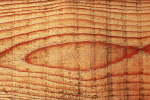Choosing the Right Type of Wood
Author: steve Published Under: Home
 Woodw
Woodworking is in many ways a lost art, but more and more people are starting to learn the joys of woodworking. Woodworking is not only needed to make furniture, but is an important step in regards to building and construction. One of the most important parts of woodworking is choosing the right type of wood, as wood is, of course, the most important material.
Hardwoods vs Softwoods
In nature, hard wood is much more common than softwood, with greater than 35,000 different species of hardwood and only around 200 species of softwood. However, while there are many different types of wood, generally most are not well suited for woodworking. Many are also very rare, making them much more expensive and too costly for your average woodworking project.
While hardwood is generally harder than softwood, this is not the major difference between the two. Instead, softwood is produced from cone bearing trees, like pine, while hardwoods have their seeds contained in some sort of seed case, such as the apple tree.
Some hardwoods are incredibly soft, while others are so dense and heavy that they do not even float. Softwoods, on the other hand, can actually be very hard and some softwoods, like South American Pine, is actually harder than most hardwoods.
Determining the Density of Wood
One of the key figures when analyzing how strong a piece of wood is, involves considering its density, which is usually described in kg/m^3.
The higher the density, the stronger and tougher the wood. Water has a density of 1000kg/m^3, so this is a good basis for comparison.
Common Wood Density: Softwoods
- Douglas Fir- 530kg/m^3
- Parana Pine 550kg/m^3
- Redwood 510kg/m^3
- Western Red Cedar 390kg/m^3
Common Wood Density: Hardwoods
- European Beech 720kg/m^3
- American Cherry 620kg/m^3
- American White Oak 770kg/m^3
- Brazilian Mahogany 560kg/m^3
Buying Lumber from a Sawmill
Usually, for most projects, the wood at the local hardware store will do, but buying lumber directly from the sawmill can often net a much higher grade of wood. This can also allow you to get the wood cut to size for your project, although now most big box hardware stores, like Lowe's and Home Depot, will cut wood in small quantities.
If you are buying lumber from a saw mill, it is important to remember that the dimensions usually given are not the actual dimensions, but rather the starting dimensions. As a result, the wood will usually be a little smaller. If this is an issue, make sure you bring it up before ordering. The same is usually true of wood bought from a hardware store, where a 2" x 4" is actually closer to a 1.5" x 4".
When wood is cut, it is also planed to make it smooth. If the edges of the wood are uniformly 90 degrees when compared to other boards, it is classified as Planed Square Edge(PSE.)
If the edges are planed, but may not be 90 degrees when compared to other boards, they are classified as Planned All Round(PAR.)
If you want the wood to be cut to length, it must be cross cut. Make sure to specify that you want the wood crosscut exact to length. The reason it is better to do this at the saw mill is that once the timber is dried, cutting its thickness can cause the wood to cup forming a slight depression.
Buying Man-Made Boards
Real wood is nice, but it is also very expensive. It is hard to justify spending a great deal of money on wood you will never see, such as a subfloor or roof boards, so man-made wood is very popular.
There are 5 basic types of Man Made Boards:
- Blockboards and Laminboard: This type of wood is made out of a core of wooden strips that are glued to each other on their face. This type of wood can not become wet and laminboard uses thinner strips towards its core, which makes it more stable.
- Chipboard: Chipboard is made of highly compressed chips of wood, which are glued together. This type of board is rather inexpensive, but can not become wet. It should be nailed, as screws do not usually work well with chipboard. If you must use screws, drill a pilot hole first.
- Fiberboard: Fiberboard is often confused for MDF, but it is made differently. Fiberboard is made out of natural wood fibers and resins that have been compressed. It comes in three different densities; soft, medium, and hard.
- Medium Density Fiberboard(MDF): MDF is made out of very fine wood particles that are held together by glue. While more expensive, MDF can be used with screws and painted., although it does produce more dust when being cut and worked with.
- Plywood: Plywood is made by thin veneers of timber that are cross laminated for extra strength. Marine plywood or pressure treated plywood is the best choice and most durable type of outdoor wood, as it will last a long time outdoors without rotting.